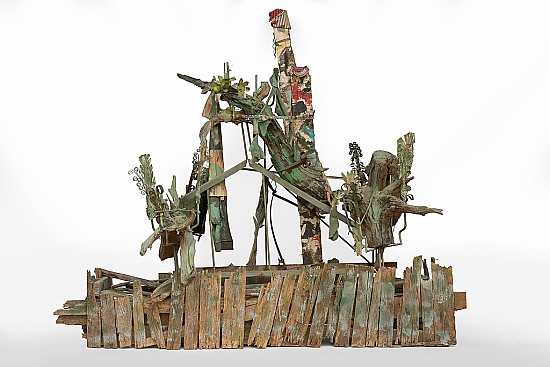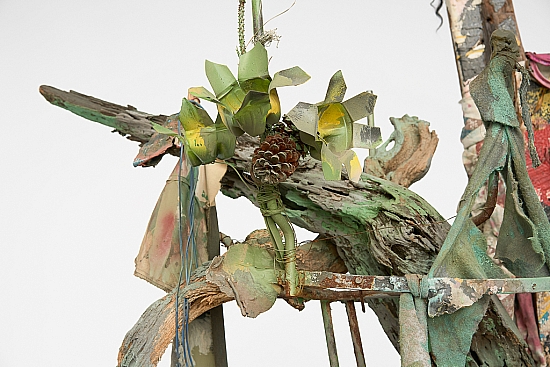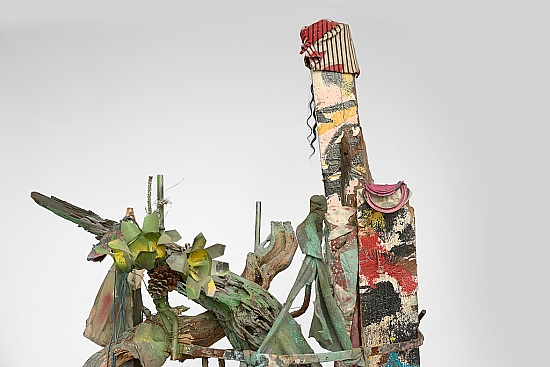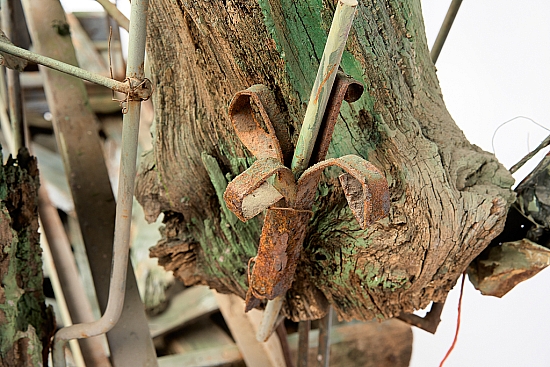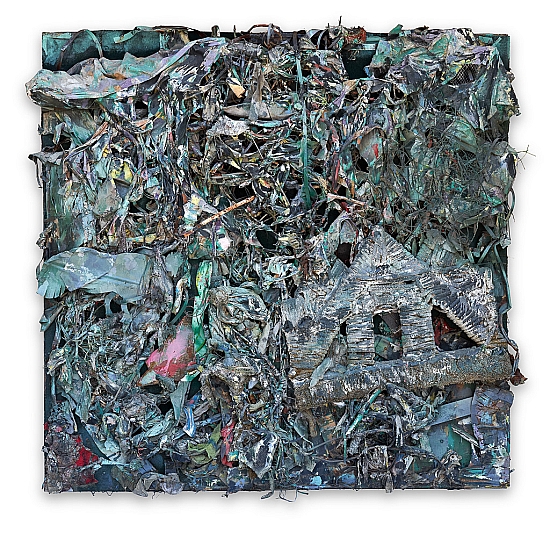Dinah's Place (two works)
2002 - 2004
Sculpture: Steel, tin, wood, wire, clothing, pinecone, plastic bottles, rope, bed linens, soda can, artificial hair, Splash Zone compound, enamel, and spray paint
Wall-hanging assemblage: Barbed wire, rope carpet, wood, clothing, wire, carpet, steel, grass fiber, tin, plastic, rope, doll, Splash Zone Compound, oil, enamel, and spray paint on wood
Wall-hanging assemblage: Barbed wire, rope carpet, wood, clothing, wire, carpet, steel, grass fiber, tin, plastic, rope, doll, Splash Zone Compound, oil, enamel, and spray paint on wood
Sculpture: 93 x 108 x 52 inches Wall-hanging assemblage: 99 x 103 x 12 inches
Collection of
Souls Grown Deep Foundation
